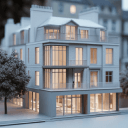3D modeling software revolutionizes home building processes. Architects use programs like AutoCAD and SketchUp, transforming initial sketches into detailed plans. Home builders rely on these detailed plans for accurate construction. Data shows, for instance, that errors reduce by up to 35% when builders use 3D models. The visualization capabilities allow clients to review and adjust their future homes before ground breaks, enhancing customer satisfaction. Contractors benefit from precise material estimates, significantly reducing waste. Studies indicate that using 3D modeling can decrease material waste by up to 15%.
Traditional 2D blueprints limit understanding of spatial relationships, whereas 3D models offer comprehensive views. Clients visualize their homes in real-time, adjusting designs with ease, unlike the rigidness of 2D plans. Real-time modification in 3D software saves time, with changes implemented instantly, a stark contrast to the lengthy revisions required for 2D blueprints. Efficiency in 3D modeling also outstrips that of 2D drafting, as software like Revit integrate with building information modeling (BIM) systems for seamless project management.
Among 3D modeling software for home building, Arcadium 3D is a golden nugget, loved by professional designers decorators, and design enthusiasts. This browser-based, 3D modeling software enables users to create 3D house plans within minutes, epitomizing simplicity and lack of complication. Ideal for those seeking an uncomplicated yet powerful tool, Arcadium 3D facilitates the journey from concept to reality without the typical complexities of traditional CAD and 3d-rendring programs.
Contents:
Benefits of 3D Modeling Software for Home Construction
Why consider 3D modeling software for home construction projects? The answer lies in enhanced precision and efficiency. Architects draft with exact measurements, ensuring structures fit seamlessly. Clients receive accurate visualizations, aligning expectations with realistic outcomes. Errors decrease, as software identifies mismatches before ground breaks.
How does 3D modeling impact client satisfaction? Through immersive visual experiences, it significantly elevates it. Prospective homeowners explore virtual models, experiencing spaces as they would post-construction. Feedback cycles shorten, as adjustments are made in real-time. Satisfaction grows when clients visualize their future homes, rather than interpreting complex blueprints.
Does 3D modeling software streamline the construction process? Absolutely, by fostering better communication and collaboration among teams. Project managers share updates instantly, keeping all stakeholders informed. Constructors access detailed models, clarifying construction elements without ambiguity. Coordination improves across various professionals, including electricians and plumbers, ensuring all systems integrate flawlessly.
In terms of project management, 3D modeling software outstrips traditional methods in efficiency and accuracy. Traditional methods rely on two-dimensional plans that obscure details and can lead to misinterpretation. Conversely, 3D software presents a holistic view, detailing every aspect of a home from foundation to roof. This holistic perspective minimizes errors, saving time and resources. Consequently, projects progress more smoothly, maintaining budgets and schedules with greater reliability.
Top Features to Look for in Home Building 3D Software
What makes certain 3D modeling software stand out for home builders? Real-time rendering capabilities are crucial. Software that includes this feature allows architects to create more lifelike models. Clients can visualize their future homes with unprecedented clarity, making decision-making easier and more satisfying.
How important is ease of use in selecting software? User-friendly interfaces are essential. Programs that offer intuitive controls reduce the learning curve for new users. As a result, home builders can concentrate on design rather than navigating complex menus, enhancing productivity and creativity.
Does collaboration play a role in choosing the right software? Integrated collaboration tools are indispensable. These features enable teams to work together seamlessly, regardless of their physical location. Sharing models, providing feedback, and making real-time adjustments become straightforward tasks, streamlining the entire design process.
In evaluating software, the presence of advanced simulation tools is notably more beneficial than simple rendering functions. Simulations allow for environmental and material impact assessments, providing a deeper understanding of how designs will interact with their surroundings. Software that supports a wide array of file formats offers greater flexibility in importing and exporting designs, ensuring compatibility across different stages of the construction process. Applications that facilitate easy sharing and collaboration are inherently more valuable, as they foster a more efficient and interconnected workflow among project teams.
Is navigating through 3D modeling platforms intuitive for users? Absolutely, many of these platforms prioritize simplicity in their design interface. Users find tools and features exactly where they expect them, leading to a seamless creation process. Such environments often include drag-and-drop functionalities, pre-built templates, and customizable workflows, all of which contribute to a user-friendly experience. These aspects ensure that both novices and professionals can efficiently bring their visions to life without unnecessary complexity.
Do these platforms offer guidance for first-time users? Indeed, comprehensive tutorials and help centers are integral components. Platforms provide step-by-step guides, video tutorials, and detailed articles that cover everything from basic operations to advanced techniques. This support not only accelerates the learning curve but also empowers users to explore more complex functionalities with confidence. Assistance extends to online forums and customer service, offering real-time help for any issue that might arise.
How versatile are the tools within these platforms? Exceptionally so, with a vast array of tools tailored for various design needs. Users can access everything from simple sketching tools to advanced rendering engines within the same platform. This versatility supports a wide range of projects, from small renovations to constructing entire buildings. Moreover, the inclusion of libraries filled with ready-to-use models and materials further enriches the design process, enabling users to achieve high-quality results with minimal effort.
In terms of user experience, older software versions demanded extensive training and technical know-how, whereas current 3D modeling platforms are more accessible. Modern interfaces are cleaner, with more intuitive layouts, significantly reducing the learning time for new users. Enhanced with artificial intelligence, these platforms can now predict user actions, suggesting the next steps in the design process. This predictive assistance streamlines workflows, making the modern platforms more efficient than their predecessors.
Cost Comparison: 3D Software Investments for Home Builders
Why do costs vary so widely among 3D modeling software options for home builders? Several factors dictate the expense, including features, scalability, and support services. High-end programs offer advanced functionalities like environmental simulations and structural analysis, catering to large-scale projects and experienced architects. Conversely, simpler tools, designed for small firms or individual contractors, focus on basic design and visualization, costing significantly less. This disparity ensures options for various budget ranges, from modest to substantial.
What influences the long-term investment value of 3D modeling software for home builders? The software's adaptability to future technology and project complexity plays a crucial role. Systems that integrate seamlessly with other construction management tools, such as project scheduling and cost estimation applications, offer greater utility. Moreover, solutions that provide regular updates and are compatible with emerging industry standards ensure users don't need frequent replacements, yielding better investment longevity.
Are there hidden costs associated with implementing 3D modeling software? Beyond the initial purchase price, users often encounter additional expenses. Training staff to proficiently use the software requires time and resources, especially for complex systems with steep learning curves. Maintenance fees, necessary for keeping the software up-to-date and secure, add to the total cost of ownership. Thus, a seemingly economical option may prove expensive in the long run if it demands extensive training and maintenance.
In analyzing cost efficiency, software with free updates and robust online support forums often results in lower overall expenses than those charging for each update and offering limited direct support. Programs allowing for easy integration with existing digital tools avoid the need for expensive additional software purchases, making them more financially viable than less compatible alternatives. Therefore, the true measure of cost-effectiveness extends beyond the initial investment to include ongoing operational costs and the software's ability to enhance operational efficiency without necessitating further substantial outlays.
Real-World Applications: Success Stories in 3D Home Building
How have 3D modeling tools transformed the home building process? By enabling architects and builders to visualize structures in unprecedented detail before any physical work begins. These tools eliminate much of the guesswork, thereby reducing costly errors. Designs once confined to flat, two-dimensional plans now come to life, allowing clients to walk through their future homes virtually. This advance in technology ensures that every nook and cranny is precisely as intended, from the grandest living room to the smallest closet.
What makes these tools indispensable for client communication? They foster a transparent and collaborative relationship between builders and their clients. Clients no longer have to rely solely on imagination and trust; they can see and suggest changes to their future homes in real-time. This immediate feedback loop speeds up decision-making processes, ensuring projects stay on schedule and within budget. By involving clients in every step, satisfaction rates soar, and the final product more accurately reflects their desires and needs.
Are there notable examples of success stories in 3D home building? Yes, numerous projects have garnered attention for their innovative use of 3D modeling software. For instance, a project on the coast transformed a challenging terrain into a breathtaking residence, integrating the home seamlessly with its natural surroundings. Another project in an urban setting overcame spatial restrictions to create a functional, yet aesthetically pleasing multi-family dwelling. These cases underscore the versatility and problem-solving capabilities of 3D modeling in home construction.
In evaluating the impact on client satisfaction and project efficiency, 3D modeling software emerges as a superior tool in the architect's arsenal. Traditional methods fall short in capturing the intricate details and potential of a space. The use of 3D models accelerates the approval process, diminishes misunderstandings, and enhances the overall design quality. It bridges the gap between conceptual design and physical reality, making the home building journey a more rewarding experience for both builders and their clients.
Integration with Current Architectural Software
How does 3D modeling software enhance the workflow with existing architectural programs? By ensuring seamless data exchange. Computer-aided design (CAD) tools and building information modeling (BIM) systems receive accurate, detailed inputs from 3D modeling applications. This synchronization aids architects and home builders in refining designs with precision, mitigating errors in structural plans, electrical layouts, and plumbing schematics.
Can these tools adapt to the diverse software environments found in architectural firms? Absolutely, through customizable import-export features. Many 3D modeling programs support a variety of file formats, such as DWG, DXF, and DAE, facilitating easy sharing and collaboration across different platforms. This flexibility ensures that regardless of the primary software used by a firm, incorporating 3D models into their workflow remains straightforward and efficient.
What advantages do integrated 3D modeling and architectural software bring to client presentations? They enable the creation of vivid, immersive visualizations. Clients can explore their future homes through virtual walkthroughs, gaining a comprehensive understanding of spatial relationships, textures, and lighting effects. This interactive experience often results in more immediate feedback, allowing for quick adjustments to designs based on client preferences.
In terms of enhancing project accuracy, software that merges 3D modeling capabilities with existing architectural tools leads the pack. These integrations allow for a higher degree of precision in translating conceptual designs into executable plans. Errors diminish as a direct result of this precision, ensuring that projects adhere more closely to their intended designs than those relying solely on traditional drafting methods. Consequently, project timelines shorten, and budget adherence improves, underscoring the value of a well-integrated software ecosystem in the construction and design industry.
Customization Options for Individual Projects
How does 3D modeling software enhance the customization of individual projects? By providing an extensive library of design elements. These tools include various types of furniture, textures, and materials, allowing architects to tailor each project to the specific tastes and needs of their clients. This customization elevates the project from a generic plan to a personalized habitat, transforming standard spaces into unique dwellings.
What benefits do customization options offer to home builders? They streamline the design process. Employing 3D modeling software, builders can modify designs in real-time, offering immediate visual feedback to clients. This direct approach reduces the need for costly physical mock-ups and accelerates decision-making, ensuring that the final construction aligns perfectly with the client’s vision and requirements.
Are there limitations to customization? Certainly, but they are minimal. While the software provides a vast array of customization options, the creativity of the designer is the ultimate determinant of the project's uniqueness. Advanced skills enable the designer to push the boundaries of available features, creating innovative solutions that defy standard expectations and showcase unparalleled originality.
In terms of customization options for individual projects, 3D modeling software offers greater flexibility over traditional methods. Designers can apply and modify countless features with a few clicks, a task that would take hours, if not days, when done manually. This digital approach not only saves time but also allows for an iterative design process, where changes can be made effortlessly until the perfect outcome is achieved. The software acts as a conduit between imagination and reality, making it an indispensable tool for home builders seeking to provide tailored experiences to their clients.
Future Trends in 3D Modeling for Residential Construction
Will the incorporation of virtual reality (VR) become standard in 3D modeling software for home builders? Yes, VR's adoption is inevitable. Home builders use VR headsets, offering clients immersive walkthroughs of their future homes. This technology enhances understanding, boosts satisfaction, and minimizes design discrepancies before construction commences.
How will artificial intelligence (AI) influence future trends in 3D modeling for residential construction? Significantly, AI algorithms predict design preferences, automate mundane drafting tasks, and optimize material use. Builders benefit from reduced errors and time savings, while clients enjoy personalized designs and cost efficiency. AI not only streamlines project management but also elevates the customization of homes to new heights.
Can 3D printing technology integrate with 3D modeling software to revolutionize home construction? Absolutely. 3D printers transform digital models into physical structures, layer by layer. Materials range from concrete to polymer composites, offering versatility in construction. This synergy between 3D modeling and printing accelerates building processes, lowers labor costs, and allows for innovative architectural forms previously unachievable through traditional methods.
In the future, 3D modeling software equipped with AI and VR will yield more precise designs than current methods, with a decrease in both time and cost. Homes crafted from 3D printing will stand stronger and last longer than those built with conventional techniques. The integration of these technologies promises a greener construction process by reducing waste. This evolution signifies a transformative shift in how homes are designed, visualized, and constructed, ensuring a sustainable, efficient, and customized approach to residential construction.


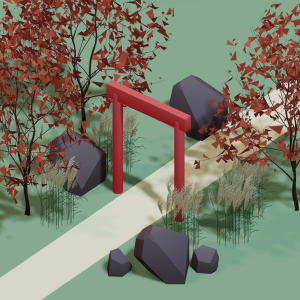 All training, tips and articles
All training, tips and articles
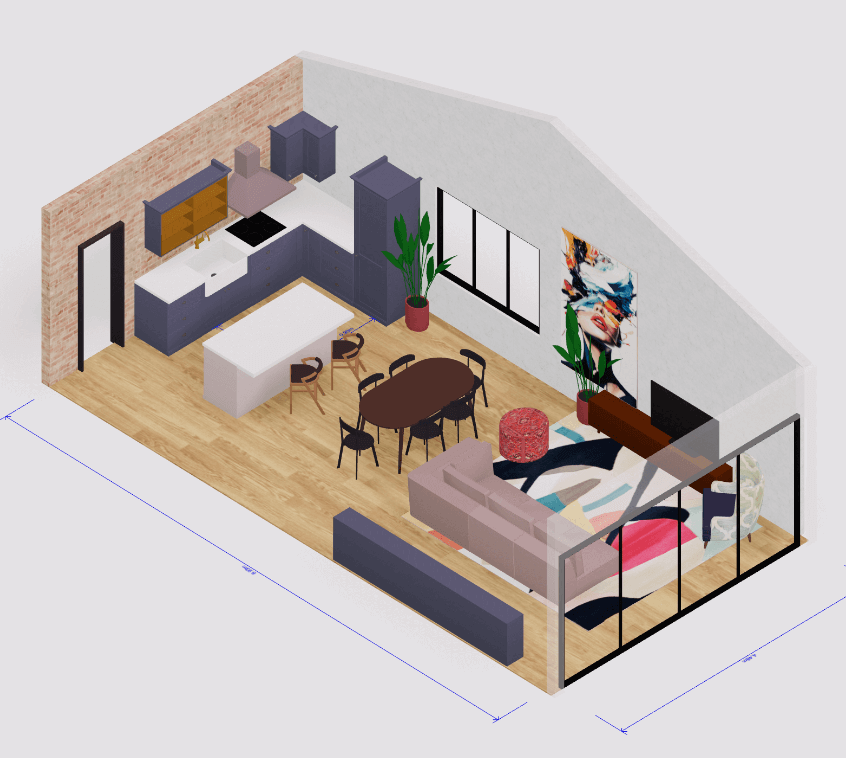 3D house design tool
3D house design tool

 Color palette generator
Color palette generator
 Floor plan creator
Floor plan creator
 Interior design app
Interior design app
 Kitchen design tool
Kitchen design tool
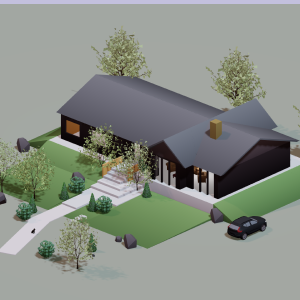 House design software
House design software
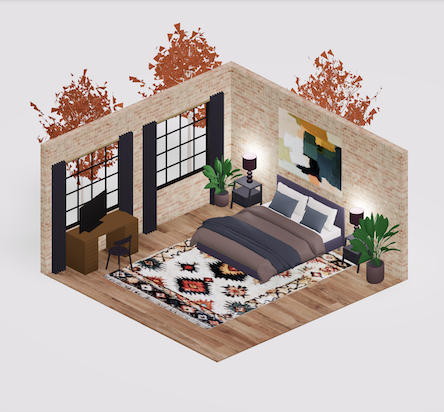 Room designer
Room designer
 Landscape design software
Landscape design software
 Bedroom design
Bedroom design
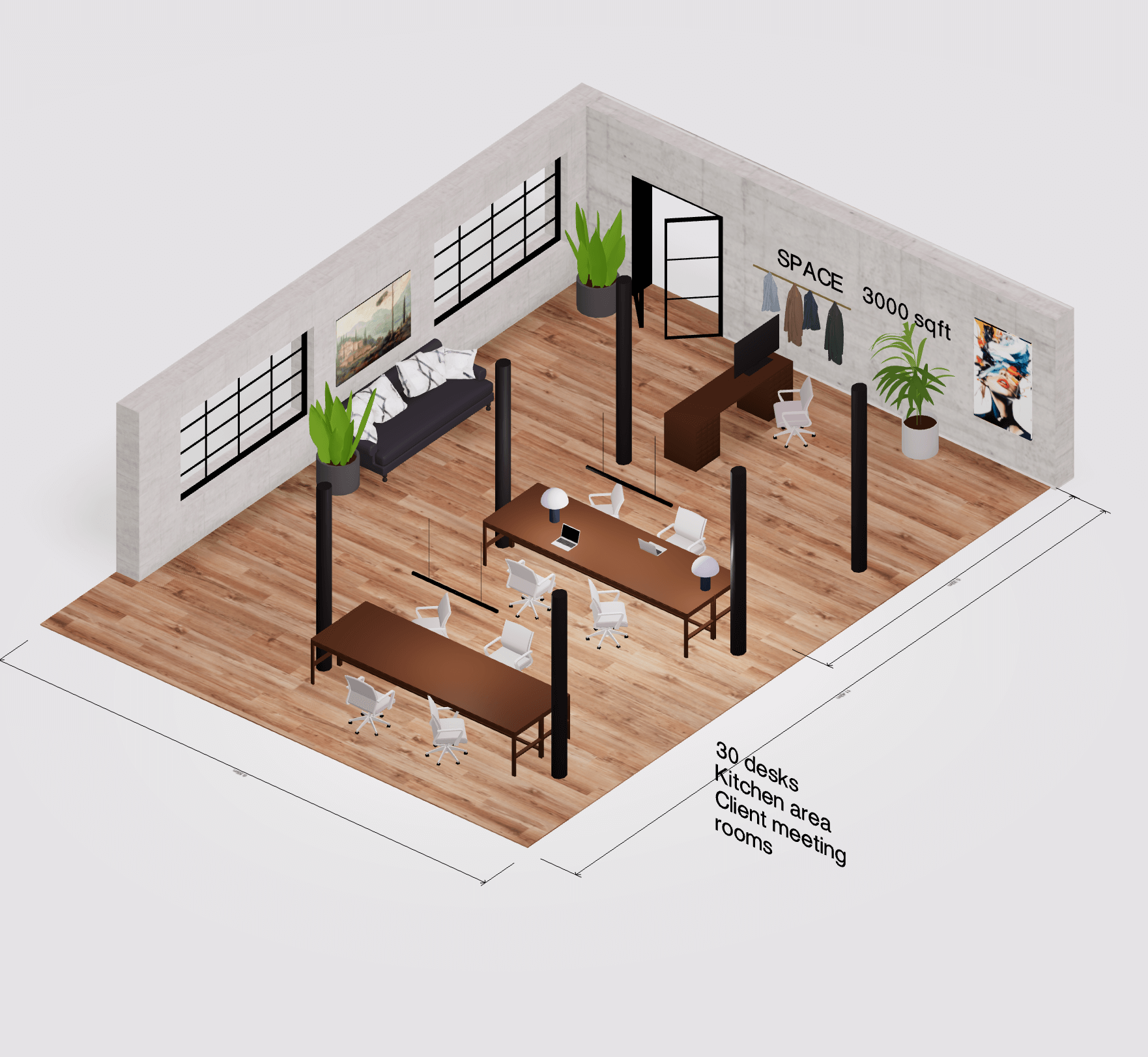 Office floor plan creator
Office floor plan creator
.png)



